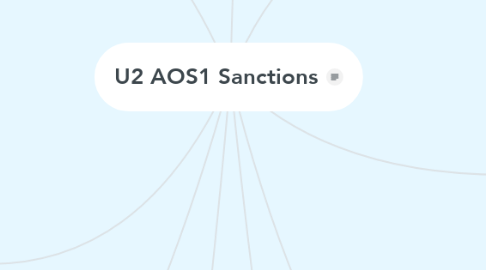
1. Balance between institutional powers and individual rights
1.1. Questioning:Police have the power to question individuals The right to remain silent protects us from this power
1.2. Imprisonment:Prison guards have the power to put you in solitary confinement Prisoners have the right to at least 1 hour of fresh air
1.3. Arrest: Police have the power to ask for your name and address Individuals have the right to know why they are being arrested
1.4. Court Proceeding: Individual has the right to be innocent until proven guilty Institution has the right to proceed with a matter the courts.
1.5. Bail: Institutional power is that police officers can decide whether you are granted bail or not 24hours after the arrest individual has the right to leave
2. Reasons for a court hierarchy
2.1. Jurisdiction: The power of a court to hear cases
2.1.1. Original Jurisdiction: The power of a court to hear a case for the first time
2.1.2. Appellate Jurisdiction: The power of a court to hear a case on appeal
2.2. Magistrates Court Summary offences, indictable offences heard summarily, committal hearings Original jurisdiction
2.2.1. Country Court Indictable offences- theft, manslaughter, sexual offences, assault, kidnapping. Original Jurisdiction Appellate Jurisdiction: Appeals from the Magistrates Court
2.2.1.1. Supreme Court Indictable offences: manslaughter, murder, sexual offences, Original jurisdiction Appellate Jurisdiction: Appeals from the country court
2.3. Reasons for a court hierarchy: Appeals Specialisation Administrative convenience Doctrine of precedent
2.4. Roles of the courts: Determining a criminal case Imposing a sanction
3. Role of the Jury in a criminal trial (12 people in a criminal jury)
3.1. The jury must listen to all the evidence during the trial
3.2. Deliberate on the facts of the case
3.3. Making a verdict (guilty or not guilty)
3.4. Concentrate during the trial
3.5. Ineligible: Any person who has a legal occupation will be ineligible for jury (police officer, judge) Disqualified: Not able to sit on a jury due to a previous conviction or being declared bankrupt Excused: Reasonable excuse to not sit in as a juror (parent, teacher, court is inconvenient commute, etc.) Challenge: Prosecution or defence are able to challenge any jurors for no reason.
4. Types of sanctions
4.1. Community Corrections Order: Court order whereby you serve your penalty within the community.
4.1.1. Purposes of CCO: Rehabilitating (offender builds connections with the community, counselling, training programs) Punishment (offender has specific conditions such as curfews)
4.2. Imprisonment: Time served in prison. Removed from the community/society. Most serious sanction.
4.2.1. Purposes of Imprisonment: Protection (removing the offender from society is protecting them) Punishment (removal from society, little contact with family, no freedom) Deterrence (deter the offender and the community from committing the same/similar crimes) Rehabilitation (educational and training programs) Denunciation (when jury decides veridct)
4.3. Fines: a monetary penalty paid by the offender to the state of Victoria. Fines are expressed in penalty points. 1 penalty point $158.67
4.3.1. Purposes of Fines: Deterrence (deter the offender and community) Punishment: Punish the offender
5. Principles of Justice
5.1. Fairness- no favouring and no fear Laws are reasonable
5.1.1. Equality- ensuring everyone is treated the same regardless of race, gender status, opportunities, etc. Equal opportunity to appeal
5.1.1.1. Access- the opportunity to attain legal representation and dispute settlement Understand legal rights
6. Institutions that enforce criminal law
6.1. Police Victoria Police Australian Federal Police
6.1.1. Role: Protect life and property Preserving peace Enforce law
6.2. Delegated bodies Parliament delegated authorities
6.2.1. WorkSafe: Enforce laws to do with the health and safety of employees
6.2.1.1. VicRoads: Enforce laws to do with road safety
6.2.1.1.1. Local councils: Enforce laws to do with particular matters of that area

